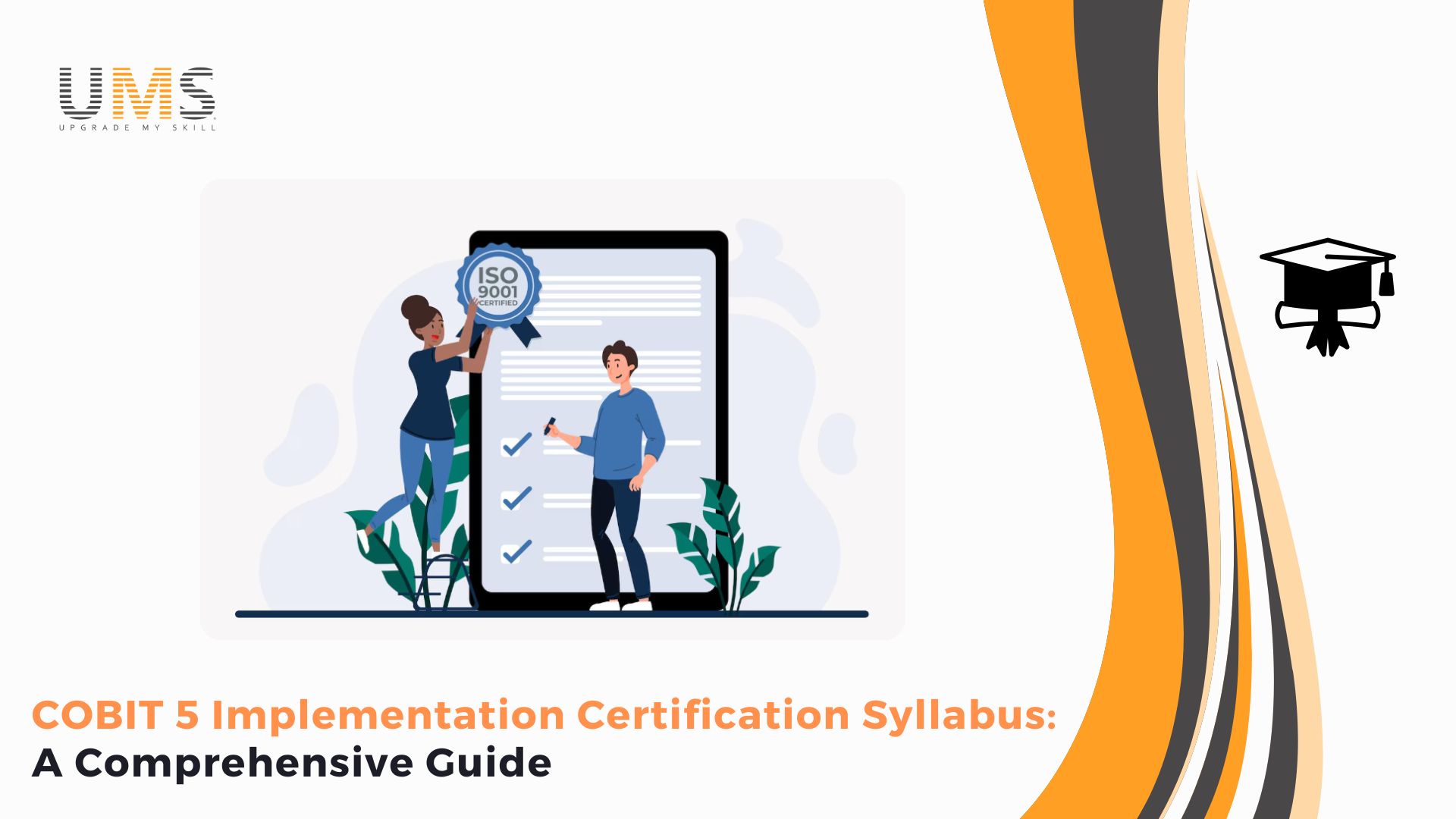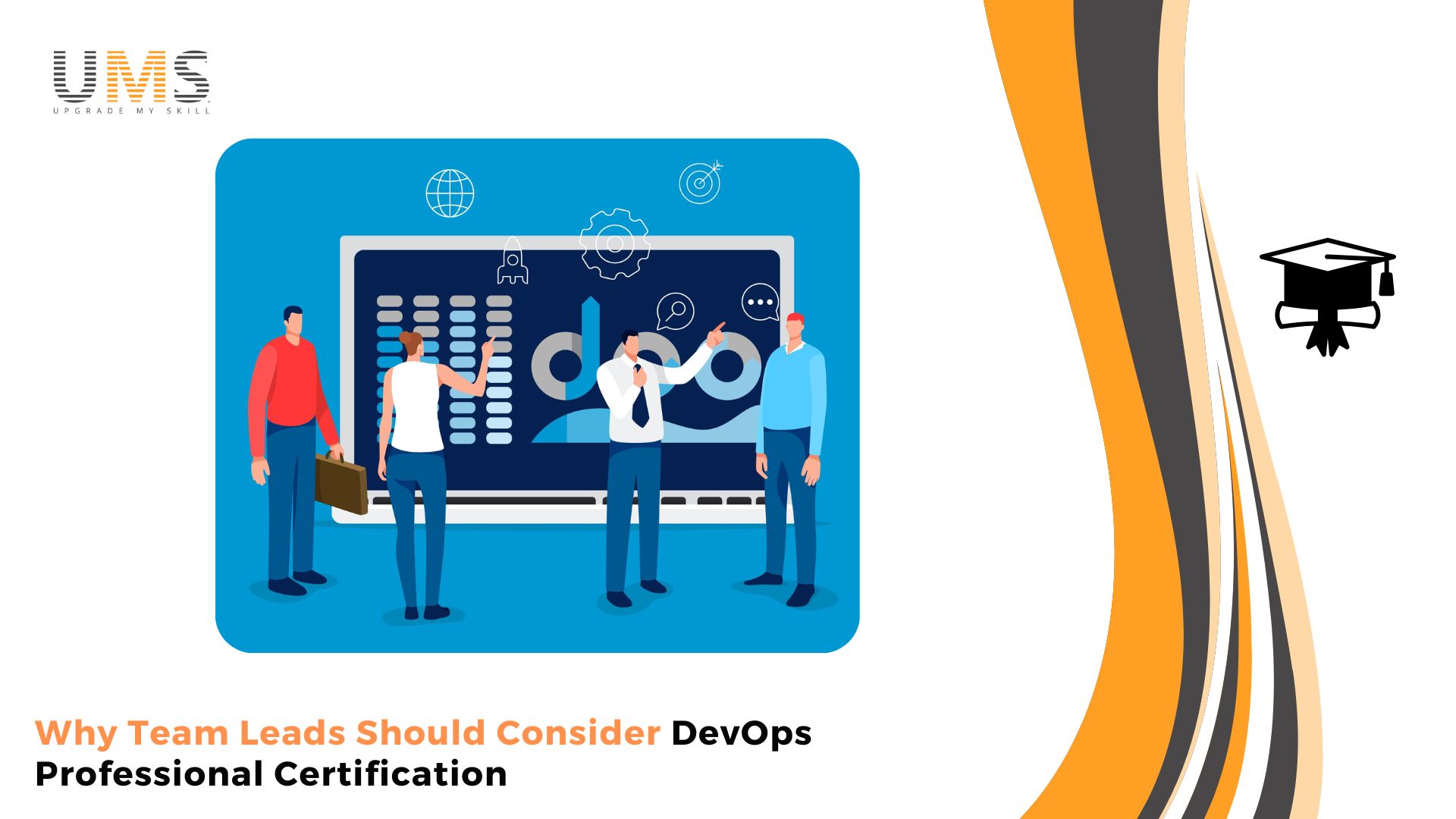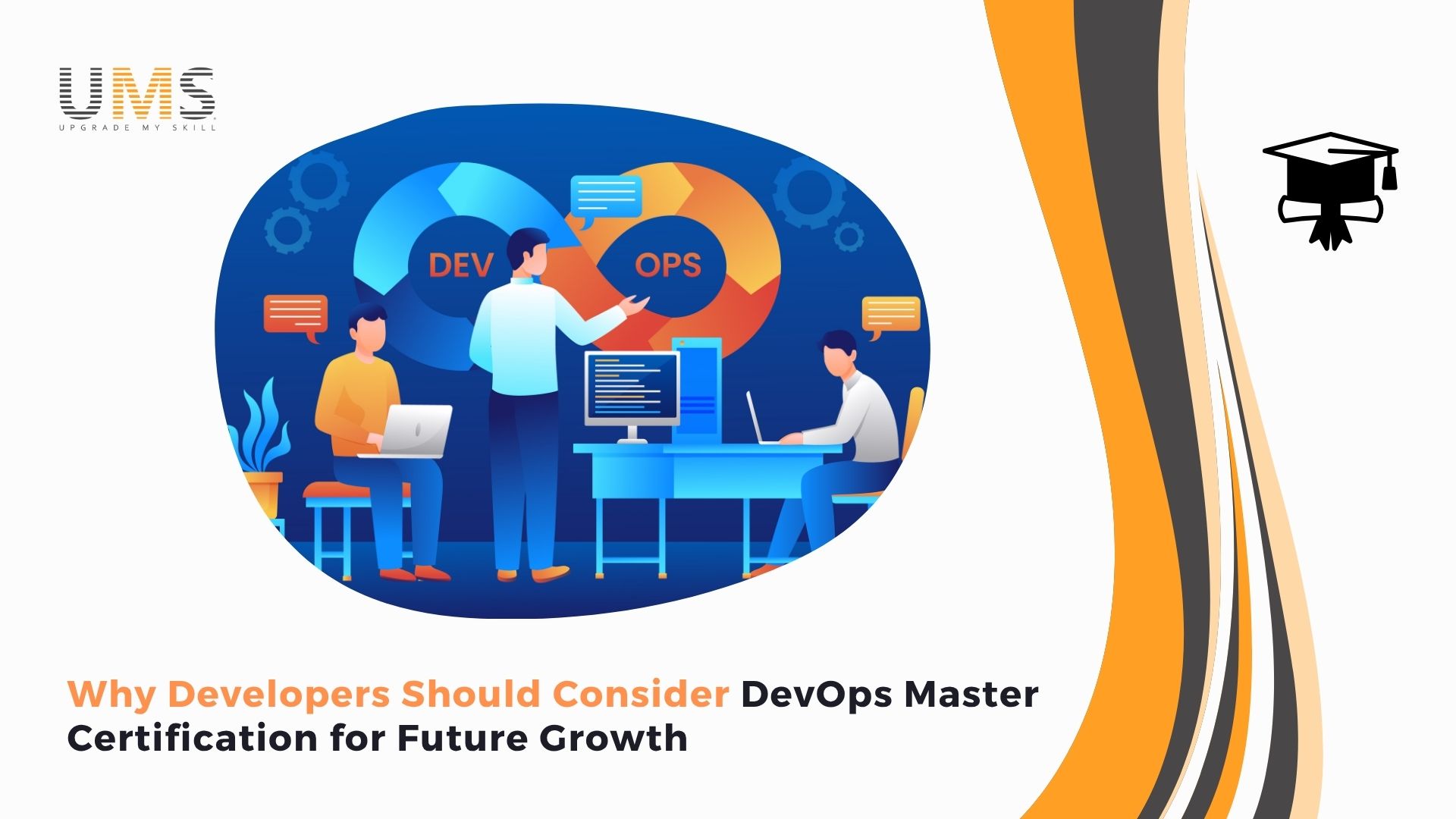In today’s complex and risk-driven business environment, organizations must ensure that IT governance aligns tightly with strategy and drives measurable business value. The COBIT 5 Implementation Certification helps professionals go beyond understanding governance frameworks — it empowers them to implement, tailor, and sustain COBIT 5 for real-world results.
This comprehensive guide explores the COBIT 5 Implementation syllabus in detail — outlining the topics, structure, and knowledge areas you’ll master to lead successful governance initiatives and achieve organizational excellence.
Understanding COBIT 5 Implementation Certification
The COBIT 5 Implementation Certification is a practitioner-level qualification designed to validate your ability to turn COBIT 5 theory into actionable governance improvements. Beyond understanding principles and enablers, this certification teaches you to assess current IT governance maturity, identify gaps, create actionable roadmaps, and execute transformation programs effectively.
This certification is ideal for IT governance professionals, risk and compliance managers, auditors, consultants, process improvement leaders, C-level executives, or anyone responsible for driving enterprise governance of IT (GEIT) programs. Earning COBIT 5 Implementation means you demonstrate capability in leading the change-identifying gaps, setting up roadmaps, managing stakeholders, ensuring value delivery, and sustaining improvements.
1. Foundations and Pre-requisites
Before you begin implementation, there are some foundational elements you must be familiar with:
- COBIT 5 Principles & Enablers: Review the five core principles (meeting stakeholder needs; covering the enterprise end to end; applying a single integrated framework; enabling a holistic approach; separating governance from management) and the seven enablers (principles, policies & frameworks; processes; organizational structures; culture, ethics & behavior; information; services, infrastructure & applications; people, skills & competencies). Understanding these is vital because implementation builds on them.
- COBIT 5 Foundation Certification: You must have passed the Foundation level. That ensures you know the terminology, framework components, and basic COBIT process model. PeopleCert / ISACA require this prerequisite.
- Organizational Context & Stakeholders: Knowing the business drivers, the pain points in current IT governance or management, stakeholder concerns and expectations, and regulatory/compliance requirements that impact your organization. These inform scope, priority, and design.
2. Implementation Lifecycle & Methodology
A major part of the COBIT 5 Implementation syllabus involves mastering the Implementation Lifecycle — a structured approach for rolling out COBIT 5 across the enterprise. The lifecycle is divided into key phases that guide the implementation journey:
- Identify Problems & Opportunities: Analyze the current state and perform a gap analysis between existing processes/capabilities and COBIT best practices. Define the business drivers that justify the need for change.
- Scope & Plan Implementation: Decide which parts of the organization or which processes to include. Prioritize initiatives based on risk, value, cost, and Stakeholders expectations. Define timelines, resources, and roles & responsibilities (RACI).
- Design Governance System / Tailoring COBIT: Adapt COBIT’s processes, enablers, and controls to suit organizational needs. Apply Design Factors to adjust the governance system in line with culture, size, risk appetite, and strategic goals.
- Implementation Execution: Roll out the planned changes, configure processes, manage organizational change (people, skills, infrastructure), and ensure integration with existing tools and governance mechanisms.
- Monitoring, Review & Continuous Improvement: Measure process capabilities using the Process Capability Model (PCM), review performance, gather feedback, and make refinements to sustain improvements.
- Realizing Benefits & Handling Risks: Ensure that anticipated benefits such as value delivery, risk reduction, and operational efficiency are realized while managing risks, resistance to change, and implementation complexity.
3. Process Capability & Assessment
To implement COBIT 5 effectively, it’s essential to understand how to assess process capabilities and maturity within the organization:
- Process Capability Model (PCM): Understand the capability levels — from Level 0 (Incomplete) up to higher levels such as Optimizing and what each level signifies in practice, including the types of evidence required for assessment.
- Process Reference Model (PRM): Learn the standard set of COBIT 5 processes, their associated practices and activities, and how they interrelate to support governance and management objectives.
- Performing Assessments: Apply recognized assessment frameworks to measure existing process performance, identify weaknesses, and determine improvement opportunities. Use tools and metrics to collect, analyze, and validate performance data.
4. Roles, Responsibilities & Governance Structures
Implementing COBIT 5 is as much about people and culture as it is about processes. This section focuses on understanding the human and structural elements that support effective governance:
- Key Stakeholders: Identify the main participants such as executives, IT leadership, process owners, auditors, risk and compliance teams, and functional heads who influence or support governance implementation.
- Organizational Structures & Decision Rights: Establish clear governance structures, define roles using RACI (Responsible, Accountable, Consulted, Informed) models, and assign decision-making authority at appropriate levels.
- Culture, Ethics & Behavior: Align organizational culture and employee behavior with governance goals through effective communication, incentives, and training programs that promote ethical practices and accountability.
- Skills & Competencies: Develop essential staff capabilities such as process management, risk analysis, and continual improvement to sustain governance effectiveness and long-term success.
5. Risk, Controls & Assurance
Managing risks and ensuring effective controls are at the heart of governance and implementation under COBIT 5. This section emphasizes how to build a robust assurance framework:
- Risk Management within COBIT 5: Identify, assess, and mitigate IT-related risks by integrating risk management processes into overall governance structures. Ensure that the organization’s risk appetite and tolerance align with strategic goals.
- Control Objectives & Good Practices: Understand the expected control objectives within processes, including how controls are designed, documented, monitored, and enforced to maintain compliance and operational integrity.
- Assurance & Compliance: Apply methods to confirm that governance and management practices meet internal policies, regulatory requirements, and audit standards. Conduct internal and external audits, maintain audit trails, and track compliance effectively.
6. Performance Measurement & Value Realization
Implementation efforts must deliver measurable value. This section focuses on tracking, evaluating, and improving governance outcomes:
- Defining KPIs / Metrics: Establish key performance indicators for governance, risk management, process performance, and value delivery. Ensure metrics align with stakeholder expectations and business objectives.
- Monitoring & Reporting: Utilize dashboards and reporting structures to formally review performance. Leverage monitoring data to drive ongoing improvements.
- Benefit Realization: Measure and track the actual business value delivered versus planned outcomes. Map improvements back to risk mitigation, cost savings, and efficiency gains.
- Continual Improvement: Apply feedback, lessons learned, benchmarking, and periodic reviews to enhance governance programs and sustain long-term value.
7. Exam Preparation & Format
Understanding the exam structure and preparing effectively is key to success in the COBIT 5 Implementation Certification:
- Exam Details: The Implementation exam is open-book (typically only the “COBIT 5 Implementation” manual is allowed, and sometimes the “Enabling Processes Guide”). Duration is approximately 2½ hours and requires comprehension of each phase, roles, capability models, design factors, and scenario-based questions.
- Question Types: Scenario-based questions that require application of concepts, tailoring solutions, and advising on governance changes, rather than merely recalling theory.
- Prerequisites: As previously mentioned, the COBIT 5 Foundation certification is required before attempting this exam.
- Study Resources: Use official manuals, case studies, implementation guides, mock exams, and training courses to prepare thoroughly.
- Practice & Case Scenarios: Engage with real or simulated implementation scenarios to test your ability to apply knowledge effectively in practical situations.
🌟 Conclusion
The COBIT 5 Implementation Certification empowers professionals to lead governance transformations that align IT with business strategy, manage risk, and deliver sustainable value. With mastery of the syllabus — from lifecycle design to assessment and improvement — you’ll be equipped to plan, execute, and optimize IT governance systems that truly make a difference.
Training Calendar for Upcoming Classes:
Delivery Format:
Online Classroom Training
Date:
13 - 14 Dec 2025
Time:
09:00 - 17:00
Advance Your Career with Our COBIT 5 Implementation Training
At Upgrade My Skill, we offer specialized COBIT 5 Implementation Certification Training that covers every aspect of the syllabus with hands-on learning. Our course is designed to help professionals develop real-world skills and pass the certification exam with confidence.
- Comprehensive Coverage: Includes all lifecycle stages, PRM, PCM, and implementation practices.
- Hands-on Learning: Experience governance application through interactive case studies and exercises.
- Exam Preparation: Access mock exams, study resources, and expert guidance.
- Flexible Learning: Choose between online and instructor-led classroom sessions.
- Career Growth: Position yourself as a governance leader capable of delivering enterprise value.
We also recommend Invensis Learning as a trusted training partner offering globally accessible COBIT 5 programs.
Enroll Today and take the next step in your IT governance journey!



